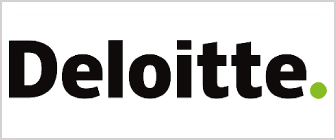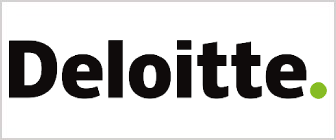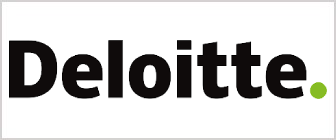What is the most significant change to your region/jurisdiction’s indirect tax legislation in the past 12 months?
Rogier: If we talk about EMEA, and indeed globally, the most important development is that real-time reporting regulations are becoming a feature in more and more jurisdictions, for example SAFT, SII in Spain and e-invoicing and (Data) audits. This requires a complete revision of the way multinationals manage and organise their indirect tax function and creates a shift from a “push” (by way of traditional compliance and reporting combined with a tax control framework), to an increased “pull” (tax authorities requiring full relevant indirect tax data in real time). This requires tax departments to analyse possible gaps in real time, explain the difference between reported Value Added Tax and source relevant full VAT data position. This is a different type of management.
Kendra: Brexit.
What has been the most significant impact of that change?
Rogier: Tax departments are having to manage the indirect tax function in an increasingly real time and data-driven way, requiring tax departments to spend more time on (indirect) tax data quality, standardisation and amelioration of processes, and completeness. At Deloitte we refer to this impact as the tax department’s need to “go upstream” towards transactional data sources. The way to manage this also requires more use of (real-time and ERP independent) add-on technology to tie relevant data sources together and create insight into gaps between VAT return and reporting as compared to the SAFT and other real-time reporting relevant to the full indirect tax data set.
Kendra: Customs duties and movement of goods.
How do you anticipate that change impacting your work and the market moving forwards?
Rogier: More focus and increased need to spend more time on standardisation and processes, in order to be better capable of applying tax technology to manage the indirect tax function in real time and proactively.
Kendra: Changes to supply chains to provide continued timely movement of goods.
How has this changed the way you offer tax advice?
Rogier: There is an increased focus on data and tax technology. We cannot afford to see VAT advice separate from technology: tax and technology must go hand in hand. Different demands and the way we assist and advise clients are emerging. For example, co-creation, collaboration and alliances with clients and creation of different ecosystems are needed much more when it comes to this type of approach. This is a fundamentally different way of working from the recent decades.
Kendra: Using more technology to disseminate legislation changes quickly and to analyse transaction flows.
What potential other legislative changes are on the horizon that you think will have a big impact on your region/jurisdiction?
Rogier: Legislation in the tax and legal sphere is very much behind the pace of innovation and technology in general in the world. The legislation and regulation in many countries and regions, even where tax authorities have gone somewhat digital, is not capable of dealing with new business models and the speed of technology and digitisation. Base Erosion and Profit Shifting (BEPS) and digital economy are tips of the iceberg. The most disruptive technologies are still ahead of us, and tax and legal regulation is not keeping up. Other topics on the horizon include: possible upcoming new regulation and inconsistency/differences in tax data gathering, retention and security storage, etc., as well as increased uncertainty, inconsistencies and trade barrier issues as a result of decentralisation and protectionism (e.g., US/China/Russia trade wars, Brexit, etc.).
Kendra: Digital Services Tax.
What are the potential outcomes that might occur if those changes are implemented?
Rogier: Increased uncertainty particularly for old-world multinationals. Non-traditional disruptive digital MNCs will grow exponentially and will add even more value—but will also have characteristics that will make them increasingly virtual and unsuitable for traditional models of taxation. It will become increasingly difficult to levy tax effectively to retrieve ‘fair’ taxation using these new and disruptive business models. It will also result in increased and possibly unfair competition between traditional multinationals and regions as compared to digital businesses and digital protective/friendly regions.
Kendra: Additional liabilities for non-resident businesses.
Do you think that change will have a positive effect on both your practice and the wider regional/jurisdictional market?
Rogier: There will be a tsunami of tax technology requirements, needs and opportunities. Whether that is a positive or negative occurrence depends on how practices position themselves and anticipate this. The big winners will be those who are able to combine tax and technology and apply them hand in hand with clients. That also means capabilities, skill sets and a mindset to combine tax and technology. It is unimaginable that any practice will be a leader in tax and legal without also being the undisputed leader in tax and legal technology. You can watch and see it happening or you can be part of it. The choice is right here under our noses.
Kendra: Yes.
How are issues surrounding the taxation of the digital economy affecting your jurisdiction?
Rogier: As mentioned above, there has been and will be a massive impact. Legislation has trouble keeping up and there is increased inconsistency between countries, jurisdictions and regions, and increasing uncertainty as a result.
Kendra: Increasing compliance obligations.
What legislative changes would you like to see be implemented that you think would have the most positive effect on your practice and the wider regional/jurisdictional market?
Rogier: More harmonised real-time reporting frameworks consistent (at least) in the EMEA region and ideally globally. Introduction of new tax models to tackle the digital economy effectively in recognition of the fact that traditional taxes (even indirect tax) are not best suited to capture and effectively tax the value added by disruptive new businesses, business models and technologies.
Kendra: More consistency in indirect tax principles and alignment between direct and indirect taxes.
Do you think something like that is likely to be implemented in the near future?
Rogier: We are sceptical about the ability of tax and legal regulation to keep up with the speed of technology and, therefore, almost by definition the answer is no. The challenges faced by BEPS and EU attempts to harmonize tax legislation effectively in combination with data and/or real-time reporting suggest limited prospects for an imminent change of pace.
Kendra: No.
What are the roadblocks to implementing such legislative changes?
Rogier: There are competing forces at work, including a political environment that seems to be moving in exactly the opposite direction: towards less centralisation, less harmonisation and more trade barriers. Where measures for the digital age have been adopted they tend to be inconsistent and therefore less effective than they could be.
Kendra: The complexity of and investment in existing taxation structures.



